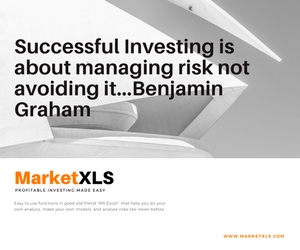In a surprise move, GE has agreed to sell it’s BioPharmaceutical Division to Danaher for $21 Billion. The much needed cash will go a long way towards stabilizing $GE’s battered balance sheet, and reveals how new CEO Larry Culp has earned his reputation as a shrewd deal maker. Here are three key business lessons that we can learn from the transaction.
1. Actions Speak Louder than Words; He who says the Least Wins.
$GE is one of America’s oldest mega corporations, and change does not come easily to the lumbering giant. Only sheer desperation could have fueled the boardroom coup which landed Larry Culp on the throne in mid 2018. Mr. Culp is GE’s first outside CEO in nearly 100 years.
In sharp contrast to his two immediate predecessors, Mr. Culp did not spend a lot of time on cable TV news assuring panicked stakeholders that everything would be alright. He did not give the press detailed descriptions of his evaluation of GE’s current woes. There were few conference calls or press conferences in which Mr. Culp assured the world that strategic options were being evaluated. His predecessors’ floundering in that direction only fueled the media hysteria that led to the stock’s downward spiral.
Rather, he invested his time crafting a deal that had not even occured to the “longtime GE analysts” and know it alls that populate cable news. It’s a great deal for $GE just on it’s own merits; but the element of swift surprise has helped to quiet the carnival like atmosphere that has surrounded the stock. With little drama Mr. Culp came up with $21 Billion dollars to address GE’s most pressing problem; it’s out of control debt. During his commentary to the media, Mr. Culp characteristically kept his cards close to his vest:
“This deal takes us approximately two-thirds of the way toward our goal of reducing net industrial leverage to 2.5 Ebitda,” Culp said Monday in an interview, referring to earnings before interest, tax, depreciation and amortization. “It’s not a declaration of victory. We still have plenty of work to do, and we will be doing other things over time.”
What work to do? What other things over time? We don’t know, but we do know that Culp means business, and the games of denial and hiding behind rosy projections are over at $GE. Debt contained, confidence restored, stock price stabilized.
2. Keep In Touch
One element that allowed this deal to unfold so quickly was that Mr. Culp is selling the division right back to the same company that he had successfully lead for more than a decade. This is a $21 Billion transaction that is essentially occurring on a handshake.
Let’s consider what typically must occur in a corporate transaction of this magnitude. First, the CEO would have to get Board approval to deviate from the original plan, which was to IPO the entire health business. In the Immelt days, that alone would have taken a year, as the Board would have commissioned an independent committee to “evaluate options” which is corporate code word for “cover our asses.”
Then, had the board finally given a green light, a third party broker would likely have been employed, typically an investment bank such as Goldman Sachs or the like. First the bank would have conducted an indepth valuation of the division, which could have taken anywhere from 90 days to a year. This evaluation would have produced a report which would go to the Board, with a recommended sale price. Again, this entire laborious evaluation process and the massive fees associated with it would have occurred almost exclusively to shield any one executive from too much blame if anything went wrong.
After a valuation target would have been established, Goldman Sachs, or another third party, would very likely have begun a sales process the same way that a real estate agent would try to sell a commercial property. This could take…..who knows.
Once a tentative deal had been reached, armies of lawyers from both sides would have been called in to initiate an excruciating due diligence process that has killed many a deal over time.
But Mr. Culp saw an opportunity in GE’s desperation. He knew that if he could personally assure the Board of a better deal than what had been publicly announced (the IPO Spin Off) while trusting the other side to maintain confidentiality, he could probably bypass a lot of the typical bureaucratic roadblocks. And Mr. Culp knew an awful lot about $DHR, and how GE’s biopharmaceutical business might hold special appeal to his old comrades in arms. He picked up the phone. He engaged with people who had trusted him for decades. And he made a deal.

3. It May Not Matter what the Market Value of an Asset is, if it has Special Value to You.
As I have written in previous posts, $GE’s originally announced plan to spin off the entire Medical Division in an IPO was not necessarily a bad plan at all for shareholders. In fact, I recommended that investors take advantage of GE’s then brutalized share price exclusively to get a good deal on what would be a still healthy GE Medical. The rump industrial GE that shareholders would have been left with would have been an afterthought; a nice bonus at best.
While that deal may have been good for investors in general, it well may have been problematic for Mr. Culp and the Board, as they would have been left in charge of the rump. In short, IPO’ing all of GE Medical would have realized value for that division, but it would have deprived rump GE of a cash cow just at a moment when cash flow is THE issue of the day.
So the problem that Mr. Culp inherited was; how do you raise cash by selling assets without depriving yourself too much of the cash flow that those assets generate?
The answer is simple math, the reality, not so simple. Sell something for a very high price.
Selling GE Biopharmaceutical for a very high price is exactly what Larry Culp, salesman extraordinaire, is doing. As previously stated above, at a sales price of $21 billion Mr. Culp is achieving ⅔ of his debt reduction goal, but somehow only giving up $1 billion a year in cash flow. He is managing to wrangle a sale price equivalent to 17 times the division’s annual earnings.
Now this is a trick that we would all be wise to learn. Mr. Culp should have been in a terrible position to make a deal; GE’s share price was in free fall; the company’s desperate need for cash was well publicized; on paper he should have been forced to accept whatever price $DHR would give him for the Biopharmaceutical division.
But, clever Mr. Culp had two critical elements on his side. First, he had intimate knowledge of Danaher, and a unique understanding of how $GE’s assets could unlock special value for Danaher. Second, he had a very credible, and well established “plan B.” If $DHR didn’t give him a substantially better deal than the already announced IPO, he could just walk away.
To understand why $GE’s assets held special appeal to Danaher, it helps to think of the California Gold Rush of the 19th century. Everyone fell in love with mining for gold; some miners hit the mother load; many didn’t. But everyone needed to buy mining equipment if they were going to chase the dream.
Danaher already had assembled an impressive array of hard biopharmaceutical assets used in pharmaceutical discovery; you could picture these as the 21st century equivalent of pickaxes, supplies, and heavy clothing that every gold miner needs. GE had even more of these kind of assets; not pharmaceuticals, but all of the hard goods needed to “mine for gold” in our 21st century scientific gold rush. Very complex, patented stuff, essential for “gold mining” but not easy to copy. A combination of Danaher’s biotech “mining equipment” with GE’s “mining equipment” would mean less competition in the market, and would leave a combined entity with an array of “mining equipment” that would be hard for anyone to match. Soon, any one of the thousands of small and midsize biotechnology companies “mining for gold” in the pharmaceutical business would need to buy equipment from Danaher. You can’t do biotech development without the stuff that Danaher/GE sells. It would allow the augmented Danaher to name it’s price for the kind of equipment essential to the biotech process. If augmented Danaher could name it’s price to end clients, then GE could name it’s sale price to Danaher.
Quietly, swiftly, and with no fanfare, Mr. Culp squared the circle. He found a way to reduce GE’s debt in a big way while only slightly reducing it’s cash flow. That’s a lesson worth it’s weight in gold.
There have been many twists and turns in the sage of GE’s downfall. This transaction marks one of the more hopeful chapters, and contains many lessons for investors and business people. Let’s learn what we can, to earn what we can.
DISCLOSURE: The Sick Economist owns shares in $GE






More Stories
MEDICAL ROBOTICS: A PROFIT MACHINE?
WILL INTUITIVE SURGICAL BE PERMANENTLY CRIPPLED BY THE PANDEMIC?
LESS PAIN, MORE GAIN: TREATING SKIN CANCER WITH SENSUS HEALTHCARE INC.